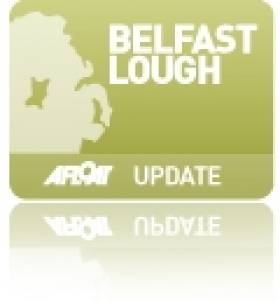Displaying items by tag: Glenn Ashby
Australian Glenn Ashby was wing trimmer on the Emirates Team New Zealand AC72 in last year's America's Cup. He is a multihull specialist, with 14 World Championships across three classes to his name.
Ballyholme Yacht Club, host of the 2014 F18 World Championships, is delighted that the 37 year old sailmaker from Bendigo Yacht Club in Victoria will be helming with child-hood friend Brett Goodall as crew. He has won the F18 Worlds three times already. The F18 is a fast catamaran with a spinnaker and double trapeze crewed by two people and is a fully International Sailing Federation (ISAF) recognised class.
Goodall has been on the entry list for some time, but until now his helmsman was unknown. Brett: "I'm happy Glenn will sail with me in Ireland. Glenn has been out of F18 sailing for some time and has focussed succesfully on the A-Cat. But this feels like a sort of homecoming to get back on a F18 again". Olivier Bovyn, International F18 Class President said " I am confident Ballyholme will provide our Class with a top quality event, merging proper and fair sailing with friendly sailor parties, and I am certain success will reward all your efforts and involvement in building up such an important organisation. Further to this, I would like to sincerely thank all funding partners, from proud sponsors to local governing bodies, whose support makes this 15th F18 World Championship possible. Wishing you all the best".
Ballyholme Yacht Club is highly experienced in running events of this magnitude and has among its members three World Champions and 11 Olympic sailors. BYC Is delighted to have club member Bill O'Hara as Principal Race Officer. Bill is an Independent Sports Professional and an Olympian, and Principal Race Officer for the Volvo Ocean Race. The Jury Chairman will be Ewan McEwan (GBR) who is Chief Umpire of the Extreme 40 series.
The club is located on the eastern side of Bangor on Ballyholme Bay in Belfast Lough where racing will take place. The Lough is one of the best sailing waters in the UK with few hazards and little tide.























